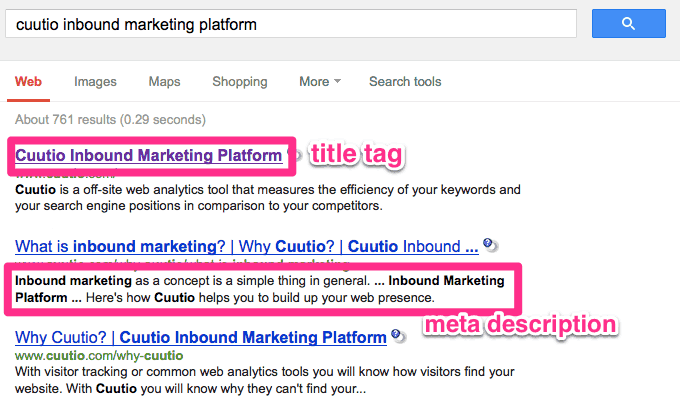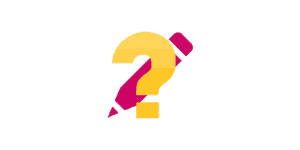Do a Google search for “Search Engine Optimization” and you’ll get a whopping 84,6 million results!
A lot has been said about search engine optimization (SEO for short) here at Cuutio. And judging from the amount of results, the Internet also has a ton of resources too. But if you’re short on time, and just to want to get started with the basics – you’ve probably been looking for a simple guide like this one.
SEO is a critical element of your online marketing strategy. It makes your website more discoverable. It helps Google match the relevance of your content to search terms which ultimately exposes you to a wider audience.
And in order to achieve a higher search engine results position (SERP), your website needs to be considered better than the rest.
So what do you do when you’re time is limited? Check out these tactics to start getting more love from search engines.
Bare Minimum Search Engine Optimization
The Title Tag
You’ll spot the title tag at the top of your browser window. And it’s basically the most important part of every page you create!
The title tag is what Google uses when it plays matchmaker to pair your content with relevant search terms.
Here are a few pointers to make your titles more effective for search engines:
- Put your most important keywords in the beginning to give them more weight
- Maximum of two keywords per page
- Ensure your headlines make sense to people and sound natural
- The title should describe the contents of the page and NOT the whole website
- Place your company name towards the end of your homepage title tag
Meta Description
A Meta description is similar to a title tag, but gives more information about what the page is about.
You won’t see it on the actually page itself. But you’ll recognize it as the text under the title in search results. It won’t impact your ranking, but it’s important because it can help attract more clicks to your content.
 Remember these tips when you’re writing a Meta description:
Remember these tips when you’re writing a Meta description:
- Keep it under 160 characters
- Make each description unique
- Include keywords as they increase click through rates because they’re bolded in results
Optimizing The URL
The URL essentially tells you what the page is about, and also helps Google determine its contents and relevance for search terms.
By including keywords in your URLs you make your content easier to find for both humans and search engines.
Headers
Make sure your content can be easily read by breaking it up into sections using headings.
Using the h1, h2, and h3 tags helps people scan the content and is similar to what Google does too. Make sure to include Keywords in headings as they are considered to be an important indicator of the page’s content to Google. Each page has to have one primary headline as h1. Also use multiple h2 and h3 headers, but keep them short so that they’re given equal weight.
Images
Images are an awesome way to complement your content and make your page more appealing. But the thing is that Google can’t read what’s in the image.
However it can read the image’s URL and also Alt Tags. An alt tag is way for you describe the image with text where you should also include keywords.
Changing image URL is simply a matter of changing the filename before uploading.
You’ve probably noticed we mentioned the need for keywords a lot in this post. And that’s because they form the basis of how people search for content and how Google determines whether it’s a good match for them. However, never compromise readability for SEO, it will do you more harm than good. And don’t spam your pages full of keywords.
As a rule of thumb for optimizing each page, don’t mention your keywords more than 6 times.
For more information on keywords check out: 4 Ways To Find Out What Keywords Your Customers Are Using
Photo by Ian Sane





